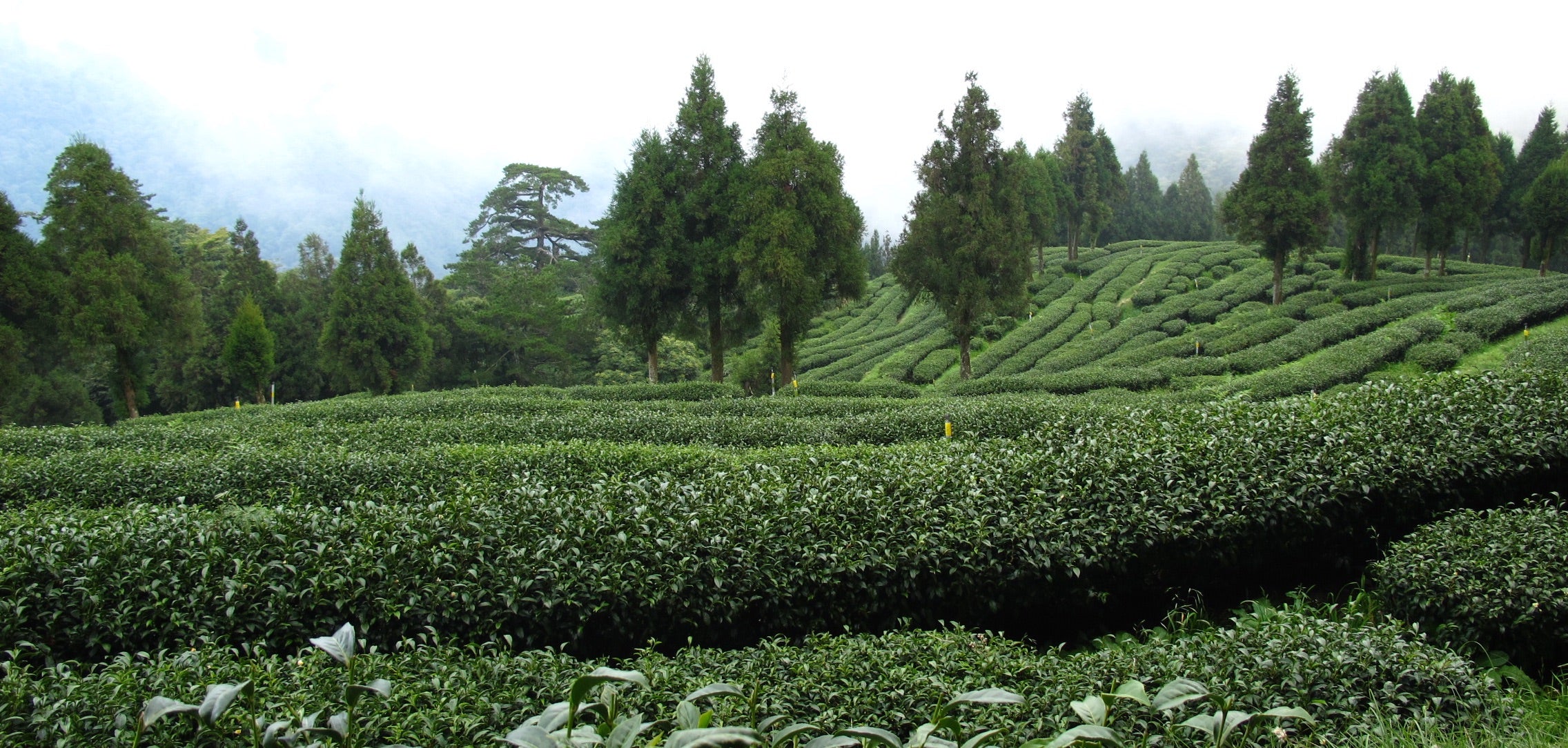Taiwanese oolong tea
The early history of Taiwanese tea is well know and easily accessible on the web. The early stages involving the Dutch East India Company, the export-oriented efforts of Mr. John Dood in the 19th Century, and the Japanese control in the first half of the 20th Century. The first two hundred years of Taiwan tea history were ruled by foreigners eager to export tea in their countries or, even worst, interested in worldwide trade.
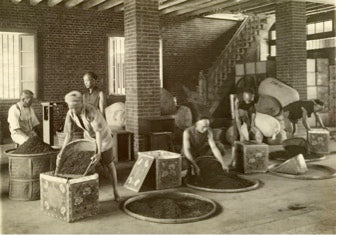
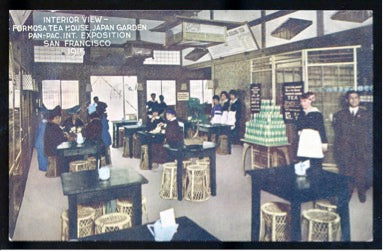
Right: Formosa tea garden at San Francisco's Exposition, 1915
It wasn’t until after World War II that the Taiwanese began themselves to improve their own tea; and not for export, but for the sake of inland consumption. A new era in the history of tea was about to start.
Mr. Wu Zhenduo, by many considered the father of Taiwanese tea, learned in Fujian how to cultivate the plant and properly process its leaves. Fujian is the birthplace of oolong tea; still nowadays the best mainland oolong teas are produced there. Mr. Wu brought his knowledge and knowhow to Taiwan and dedicated his life to bettering the quality of oolong tea on the island.

* Zhang Tianfu, despite being 8 years younger than Wu Zhenduo, kept himself visibly healthier. Mr. Wu died in year 2000 at 82 years old while Mr. Zhang is still alive and will turn 106 years old in 2016.
Mr. Wu taught the Taiwanese farmers how to improve their crop and leaf processing, tirelessly tasting all the tea presented to his judgment and sharing his advices. He developed new cultivars to increase plant resistance and drop yield whilst keeping or improving the taste. Eventually he succeeded in breeding Cui Yu and Jin Xuan, nowadays widespread tea plant varieties in Taiwan.
Note: Qin Xing, nowadays the most common tea variety in Taiwan, was introduced in Taiwan from the Japanese already in the first half of the 20th century.
Jin Xuan, named after the grandmother of Mr. Wu, is the plant used to produce what in the Western world is known as Milky Oolong, a low-oxidized tea with a milky texture.
But let’s do one step back to look at the different Taiwan oolong teas.
Fushoushan, one of the highest peak in the Lishan mountain range.
Simplifying at most, I would distinguish between four classical Taiwan oolong teas.
Baozhong is the only one I don’t drink regularly. It is quite green, only slightly oxidized. The leaves are quite big, greenish and open; not rolled as most Taiwan oolongs. To my experience a mediocre tea; no one caught my attention yet.
Dong Ding comes with no surprise from the Dong Ding village, at about 800 meters above see level. Traditional once are quite oxidized and roasted. Dong Ding is rich and complex; very complex. Its warm taste fills the mouth with dark honey and dried fruits nuances. The sweet aftertaste (hui gan) is of the most remarkable.
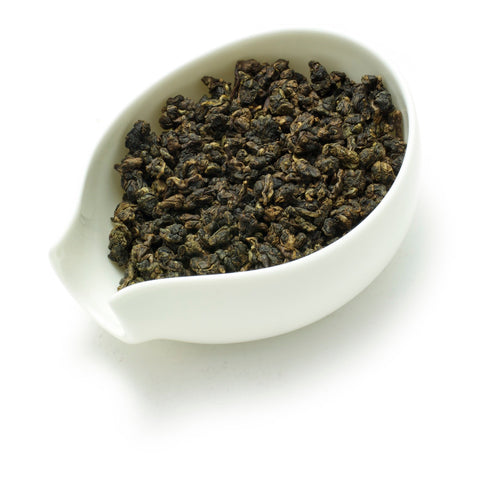
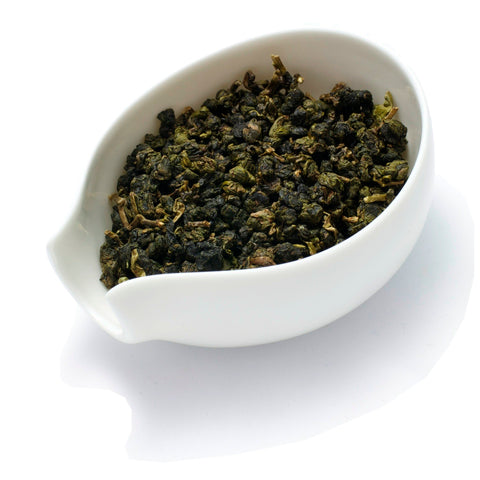
Dong Ding on the left and a greener, lesser oxidized high-mountain oolong on the right (Li Shan).
High mountain tea. If I would be forced to choose one tea to drink for the rest of my days, I would probably go got Taiwan high mountain tea. At high altitude the weather colder and foggy; the plans grow slower and are richer in nutrients and taste components. To enhance the floral notes, these teas are only slightly oxidized and not roasted. Fresh and fragrant as a flower gardens in spring, high mountain oolongs are pure and clear; a crystal among the teas. The most famous mountains are Ali Shan, Li Shan, and Shanlinxi.


Pickers on the Lishan mountain and the view from Meishan, near Alishan.
Dong Fang Mei Ren, aka Oriental Beauty, is a bug-bitten tea. Leafhoppers bite the leaves inducing the plant to produce substances that alter, positively, the taste of the tea. The dry leaves are purple-brown with few visible hairy bugs. Very aromatic, intensely sweet and fruity. Never bitter. If you are used to flavored tea, Oriental Beauty is the right choice to approach pure tea. For tea connoisseurs, however, it might be even too aromatic.

Premium Dong Fang Mei Ren available in limited quantity. Interested? Write us: info@nannuoshan.org
Worth mentioning…
Most Dong Ding you will find on the market are actually not produced in the original areas. In fact any kind of tea produced in the same fashion as Dong Ding tends to be designated as Dong Ding. The taste, however, is strongly influenced by the peculiar terroir and climate of the Dong Ding area. We at nannuoshan distinguish between original Dong Ding and Dong Ding-like tea, like Cui Yu and Qin Xing.
There are many lowland Taiwan oolong teas produced as high mountain oolong, slightly oxidized and rolled. A typical example is the milky oolong mentioned above. These teas don’t reach the pitch of authentic high mountain tea but are usually worth their price.
Dong Fang Mei Ren is not the only bug-bitten tea. Others are known as Guifei (meaning Precious Concubine). So, for example, you may find a Dong Ding Guifei on the market.
Written by Gabriele






